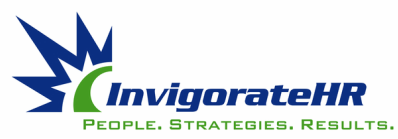 How do you get workplace diversity and inclusion right? Build a culture where everyone feels valued and heard. Chances are your organization has already invested in recruiting a diverse workforce that includes a range of ages, ethnicities, religions and worldviews. But that is only half of the diversity and inclusion picture. Creating a culture where people are respected and appreciated requires another level of effort—Inclusion! Inclusion embraces what makes each person unique, ensures different perspectives are heard, and values individual contributions. Think of inclusion as being like a chorus—each member has a different musical background, vocal range, and ability. When each person is put together with others, harmony is made. Similarly, when employees who are different from their colleagues are allowed to bring their perspectives to the team and collaborate, the company harmonically benefits through innovation, creativity and ideation…not to mention employee engagement. So, don’t forget about the importance of Inclusion! To help you build inclusivity at your organization, follow the six steps below:
1. Educate your leaders. Executives and managers are instrumental to your diversity and inclusion efforts. At the end of the day, it’s the leader who’s on the front line with our employees. It’s the experience that the leader is creating that is going to make or break your diversity and inclusion initiatives. Leaders—especially middle managers—must be held accountable for results. 2. Form an inclusion council. Consider forming a council comprising a dedicated group of 8-12 influential leaders who are one or two levels below the CEO. Carefully select them for their passion and commitment to inclusion. This group needs to be “a channel for communication” between the rank and file and the C-suite, and that includes advocating for inclusiveness in discussions with top executives when necessary. Ideally, councils should be involved in goal-setting around hiring, retaining and advancing a diverse workforce and in addressing any employee engagement problems among underrepresented employee groups. Most councils meet quarterly to review organizational feedback, troubleshoot challenges, and, most importantly, carry messages about their work to their senior peers and the C-suite. The council should be as diverse as possible, with members representing not only different ethnicities and genders but also different business functions and geographic locations, for example, even if that means tapping individuals one or two grade levels below the C-suite. If this is difficult due to the lack of diversity in the top levels of your organization, make sure council members learn about your company’s diversity strategy from HR, the diversity and inclusion team, and their colleagues in employee resource groups (ERGs) or business resource groups (BRGs). 3. Celebrate employee differences. One of the most important ways to show employees that you respect their backgrounds and traditions is to invite them to share those in the workplace. Here are a few examples of how an organization can celebrate employee differences:
4. Listen to employees. Conduct a comprehensive assessment of your organization’s demographics and people processes to develop specific strategies to promote inclusiveness. Think about the culture you want and how you can create one that is authentic to your brand while meeting the needs of your employees. 5. Hold more-effective meetings. An employee’s daily experiences with co-workers are more telling about a workplace’s inclusiveness than anything else. Determine the moments of truth in the workplace where any individual can impact diversity and inclusion. The following ideas will assist in fostering an environment where contributions from everyone are encouraged:
6. Communicate goals and measure progress. Establish and clearly communicate specific, measurable and time-bound goals as you would with any other strategic aim. The following is a list of actions your organization can implement:
When you can answer these questions, you’re speaking the language of your stakeholders, legitimizing the business of inclusion and making inclusion a ‘verb’ versus an ideal. Adapted for SHRM 2018. Comments are closed.
|
Archives
December 2024
|

 RSS Feed
RSS Feed